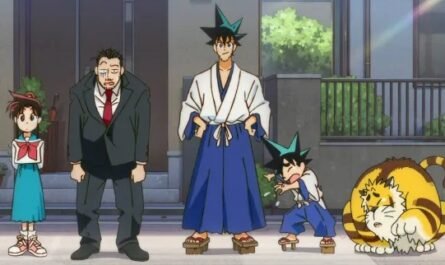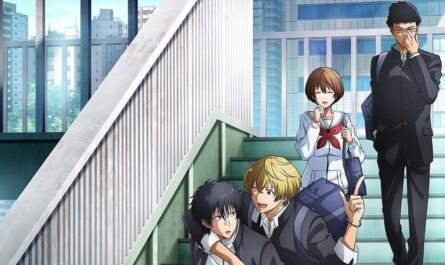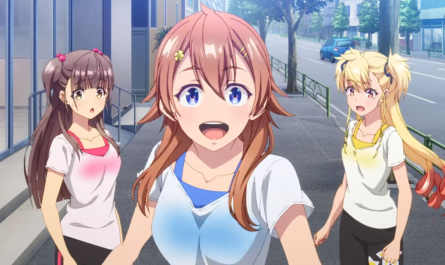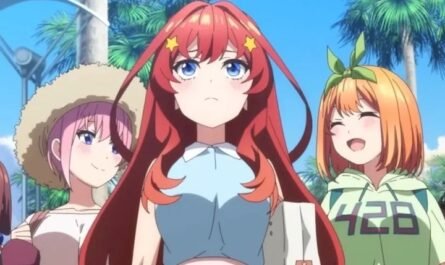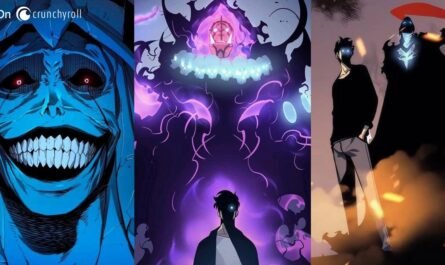Six months after its release in Japan, Mamoru Hosoda’s “Princess of the Dragon and Belle” was released in the United States. The English title is “Belle.” There is a choice of English subtitled, and English dubbed versions in Japanese, also shown in the West Side movie theaters in L.A.
Before it was released in the United States, the film had a good reputation, including being runner-up in the animation category of the LA Film Critics Association Awards (winning Danish “Flee”) and being nominated for an Annie Award. He is also digging into Oscar’s feature-length animated film division shortlist.
The critics’ reviews after the release are also quite good. According to Rottentomatoes.com, 96% of critics praise it. Most stars are 3 out of 4 stars or 4 out of 5 stars, but some critics have given five out of 5 stars.
The perfect score was Robert Coger from the movie site “Flickeringmyth.com.” His article states, “‘Belle’ is more than just a remake beauty and the Beast.’ This work is inspired by classics and approaches an entirely different story, borrowing basic concepts and essential scenes. It speaks to a new theme, time, and audience. It’s a perfect, visually lovely, and captivating entertainment piece. ” He also has a serious theme, “The second half of the hour delicately deals with heavy things.” “This movie is a good understanding that it’s difficult to trust people online.” In the end, he brought out “Beauty and the Beast” again, “Belle “is a gold standard as a remake of” Beauty and the Beast, “as a commentary on the Internet society, and as an art of animation. An unforgettable movie.” It concludes with the word.
Justin Chan, a top critic of the Los Angeles Times, also headlined that this is a virtual reality version of “Beauty and the Beast.” However, “Hosoda takes this fairy tale to a much darker and wilder place. At the heart of belle is the painful stories of abuse, violence, sacrifice, and rescue, as you’ll see in the news. In other parts, there are unrealistic actions, and it’s like “The Matrix,” “he says, dealing with classics with an original interpretation.
Chan also evaluated the visuals, saying, “The soft colors and realistic details are so beautiful that you will be completely absorbed in it.” “But this speaks deeply about community and healing,” he writes. Finally, “At the beginning of the movie, on a cold winter day, there is a scene where a frustrated tin walks alone on the bridge, and later, in the sun, she and her friends. There are places where you are happy. The visuals of this movie are nailed, but the movie suggests that the world that makes such a scene possible has a bottomless magical fountain. It is. “
The “New York Times” also seems to like this work very much and has certified it as the “Critic’s Pick” given to the excellent work.
The headline of the criticism by Manora Dardis is “Color and heart explode. Your head may explode while watching this beautiful anime.” Dardis points out that the theme of self-discovery is often found in today’s animated films, including “Frozen.” However, she states that Tin’s main character has a natural and sympathetic element. “The character design of a heart-shaped facial contour, small nose, and big eyes are essential in anime, but that doesn’t mean that Tin is trivial. She’s not trivial. Children and adults Swinging between her, she goes back and forth between childish comical and mature sadness. She sometimes looks younger than her age or looks like an adult, but she’s always very human. “
When it comes to the story, she writes in the second half that she “something seems a little more likely” but always impresses and “remembers to focus on her protagonist.” “The two worlds of Tin come and go have different feels, shapes, and colors. It reflects the conflict of Tin’s heart. Tin tries to escape from it, but in the end, she becomes one. You have to, even if everything looks broken. “
However, not everyone liked this movie. Mark Duzisik’s rating for “Mark Reviews Movies” is two and a half stars. At the beginning of his critique, he said, “Set in two different worlds, Hosoda is packed with all kinds of ideas. In the meantime, we continue to wait for them to connect and form a solid shape. Unfortunately, that doesn’t happen. ” After that, he adds that there are many compliments to each element and the way the two worlds are portrayed, but in the end, again, “Belle sometimes gives a glimpse of fantastic imagination, but the story. It is a mess of tones, modes, and ideas with little effect. “
How will the general audience who will see this work evaluate it?



